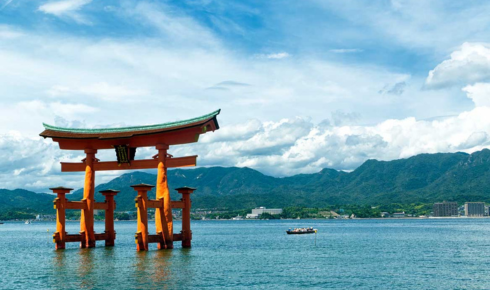What do I pack for a winter trip? For a winter trip, warm clothing is required, such as thermal layers, insulated jackets, hats, scarves, gloves, boots, and warm socks. Don’t forget the must-haves, including a waterproof jacket, toiletries, and any special items, such as a camera or power bank. Always check the weather forecast at your destination to tailor your packing.
How do I pack for a winter trip efficiently? To pack efficiently, think in layers. Pack lightweight, moisture-wicking base layers, a warm mid-layer (such as fleece or down), and an outer layer that is waterproof and windproof. Roll your clothes to save space and pack using packing cubes for organization. Heavy items, such as boots or coats, should be kept near the top for easy access.
The best fabrics to use for winter clothing are the following:
Merino wool: An excellent choice for base layers since it is light, breathable, and warm.
Fleece: A mid-layer option as it is lightweight and insulating.
Down: Perfect for jackets and coats as they are warm and do not contribute to bulk.
Waterproof materials: Outer layer materials such as Gore-Tex or synthetic ones.
Thermal fabrics: It keeps warmth closer to your body, especially during cold temperatures.
How many layers should I wear in cold weather? A three-layer system is best:
Base layer: Moisture-wicking fabric that keeps sweat away from your skin.
Mid-layer: Insulating materials like fleece or down that trap heat.
Outer layer: Waterproof and windproof jacket that protects you from the elements.
What are the best boots for winter travel? Insulated, waterproof boots with non-slip soles are ideal. Boots that provide warmth, comfort, and traction in icy or snowy conditions are crucial. Brands like Sorel, Columbia, and The North Face offer excellent options for winter boots.
Should I bring my own snow gear for winter trips? It depends on your destination. If you are going to a popular skiing or snowboarding location, you may want to bring your own gear for comfort and convenience. However, many resorts offer rentals, so packing light is often an option. If you’re just traveling to a cold destination, snow gear may not be necessary.
Pack heavy winter coats and jackets by compacting them with the help of compression bags or packing cubes. Winter coats and jackets are bulky; however, they are things you need to pack. You can also pack detachable hood or liner of your coat because that will save more space; you may bring along your most inconvenient coat for wear on the plane.
Some tips on how to pack toiletries in winter are as follows: winter air is usually cold, and may cause dryness on the skin; therefore, include moisturizing creams like body lotion, lip balm, and hand cream. Do not pack most of your toiletries in liquid form in larger containers, as this will attract excess baggage. Travel sizes or solid alternatives (for example bar soap and solid shampoo) would be appropriate.
Some essential winter accessories are:
Gloves or mittens, preferably insulated and waterproof
Hat or beanie (to conserve heat from loss through your head)
Scarf or neck gaiter to cover your neck and face
Thermal socks made of wool or synthetic fibers
Hand warmers for added extra warmth in severe cold
How can I protect my electronics from the cold? Cold temperature affects the functioning of electronics. Keep devices in insulated cases and not expose them to extreme cold for a long period. Store them in an inner pocket or warm bag when you are not using them. Carry extra batteries as they will drain faster in cold weather.
Stick to versatile pieces that can be layered for a winter destination. Choose pieces that are multi-functional, like a down jacket that can be worn both during the day and at night. Neutral colors allow you to mix and match as you please. Limit shoes to one pair of boots and a pair of sneakers or indoor shoes.
Should I carry a swimsuit in case it snows? No, if you’re heading to the places that have indoor swimming pools, hot springs, or resorts with saunas, you might consider taking one. For most winter destinations, however, you don’t need a swimsuit, but always verify what is available at your accommodation.
What types of luggage are best for winter travel? When traveling in the winter, select luggage that is sturdy and waterproof. A hard-shell suitcase protects your belongings. A backpack made of weather-resistant material is a good choice for day trips or activities in the snow or rain. A reinforced zipper bag may be a good choice because, in cold temperatures, zippers sometimes stick.
I have very little space for luggage, so what is the best way to pack for a winter vacation? Using packing cubes maximizes space and organises clothing. Bulkiest items should be worn instead of taking precious luggage space, for example boots, jackets, scarves, etc. Clothing to choose should be lightweight but warm, down jacket and fleece-lined leggings.
Dry skin in winter travel is a very serious issue, since winter air is extremely drying. Pack rich moisturizers for the face and body, lip balm, and hand cream. Drink plenty of water to keep hydrated and if possible, a humidifier in the room may help. Do not take too hot showers since these can strip off natural oils from the skin.
Can I wear regular clothes in cold weather? Regular clothes can be worn in cold weather, but you’ll need to layer them appropriately. For instance, you can wear regular shirts, but make sure to layer them with a warm sweater or fleece and an outer jacket. Avoid cotton fabrics, as they trap moisture and can make you feel colder.
What to pack for a winter city trip? Pack versatile clothing that can easily transition from daytime exploration to indoor activities. Include thermal base layers, a stylish but warm coat, comfortable walking shoes or boots, and accessories like gloves, scarves, and a hat. Don’t forget an umbrella if rain is expected.
What are some winter travel packing hacks?
Use a scarf as a blanket on the plane.
Stuff your shoes with socks or small items to save space.
Layer thin clothing under a thicker coat instead of packing bulky sweaters.
Pack a reusable water bottle to stay hydrated without needing to buy expensive bottled water.
How do I pack for a winter hiking trip? For winter hiking, key layers should include moisture-wicking base layers, a windproof outer shell, insulated boots, and gaiters to keep snow and slush out of your boots. Do not forget your hat, gloves, and thermal socks. For this, I will need a good quality backpack that has compartments for water, snacks, and extra layers.
What’s the best way to keep your winter clothes fresh and fragrant while traveling? Pack odor-absorbing bags or sachets for keeping the clothes fresh. For extra measures, you may use travel-sized deodorizing sprays in your suitcase. Make sure to wear clothes as short a period of time as possible without giving them some space, and pick moisture-wicking fabrics that minimize odor buildup.
Conclusion
Packing for travel during winter might be challenging, but a bit of planning makes all the difference in keeping warm, comfortable, and organized. Layering and versatile pieces make the best, and then comes the right accessory to complete it all. This article is just what you need if you’re off to that snowy mountain retreat or that city break to face the chilly air.




